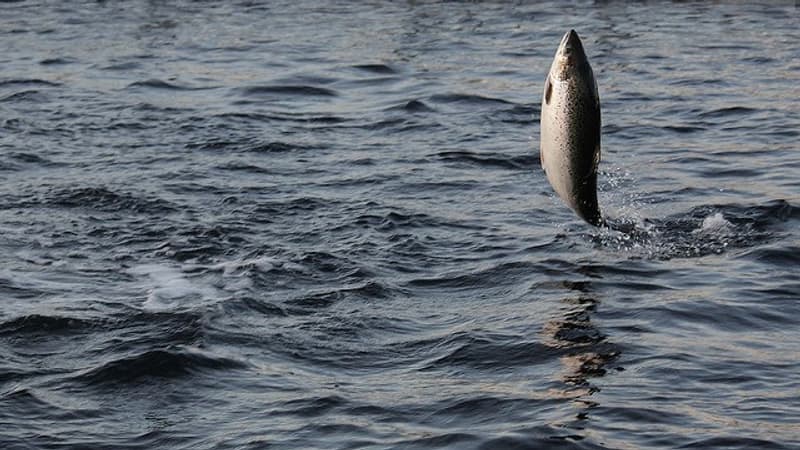Water at the waist, Christer Kristoffersen takes the air and then leaves its line on the Flood River. In the end? Nothing … Emblematic animal of Norway, wild salmon rarely has dramatically in the Scandinavian country, victim of climate change and aquaculture.
“When I was a child in the early 1980s, the river overflowed with fish at a point that we cannot imagine. It was full of trout and salmon. You could catch 10 or 15 in one night,” explains this sport fishing enthusiast, planted on the Stjørdal River, in the center of the country.
Despite their decades of experience, the fifties have been delayed for ten days. The salmon is rare, so much that Norway has placed it in 2021 in its red list of almost threatened species.
Collapse of salmonid elevators
A growing proportion of these fish that migrate between fresh and salt water do not spawn again in their place of birth, upstream of the rivers. They disappear in the sea for still mysterious reasons, but that scientists think linked to climate change.
Only 323,000 wild salmon raised the Norwegian rivers in 2024, less than a third compared to the 1980s, according to the Scientific Committee for Salmon Management, an independent body established by the authorities.
Enough to worry anyone who delivered or has lived sport fishing, a practice that has entered the Norwegian DNA since the nineteenth century.
But, before the collapse of the mountain (the number of fish that rise through the rivers), the authorities suspended it in 33 rivers last year and accompanied this year of restrictions (closing certain rivers, shortened seasons for others, fees).
A blow to tourism professionals and 60 to 80,000 sports fishermen who participate in their passion in the rivers where the salmonic population is considered abundant.
Aquaculture in question
If the perceptible climate change in the rivers (water heating, precipitation and drought …) and in the sea (modification of the ecosystem and food sources …) is difficult to stop, another responsible is indicated: aquaculture.
Since the 1970s, Norway has produced Farming Salmon, a lucrative industry that brought 10 billion euros in 2024, two export products behind hydrocarbons, and that created welcome works on the coast.
Its fjords are traveled by hundreds of aquaculture farms. Each of its six to twelve floating cages can contain up to 200,000 fish.
According to some estimates, it is not only the reproduction salmon, a thousand times more numerous than wild salmon, but also helps to lighten its ranks.
The main threats that are found is linked to the lice of the sea, parasitic and swarm on farms, escapes that can generate genetic crosses and unwanted diseases, according to the scientific committee for the Manimon Management.
When the wild salmon (the “smolts”) migrate to the sea and pass near the farms, “if they catch many of these parasites, they rob their skin, they can suck their blood and finally kill them,” said the president of the committee, Torbjørn Forsh.
“The cross between the wild salmon and the reproductive salmon is problematic, because the reproductive salmon is selected and adapts to the environment of an aquaculture farm, which is obviously very different from the natural environment,” adds the researcher. “Some of the characteristics of these fish (such as their rapid growth, note) are, therefore, very harmful to wild salmon.”
The regulation is slow
To eradicate these problems, many voices increase so that the cages, now open to their surroundings, give way to closed, hermetic but more expensive systems.
If she says that she worries wild salmon, the aquaculture industry takes time.
“It does not progress very quickly because it is quite complex. Imagine to build a closed system and install it in the sea, compared to an open system. There is much to take into account,” said Øyvind André Haram, spokesman for the Norwegian seafood association, which brings together vehicles of heavy products.
“Can something be broken? Can some elements be affected by sea currents or those of the fjords? So it takes a long time to be 100% sure that this system is safe,” he said.
The sector also requires more studies to explain the decrease in actions.
For its part, Parliament agreed in June a text that provides a regulation of farms within two or four years and that should push the sector to change closed cages.
“They are moving in a mouse step, while wild salmon needs a revolution,” laments Ann-Britt Bogen, who manages a cabin on the banks of the Gaula River.
“I am afraid to be of the last generation that will fish wild salmon in Norway if the government does not assume responsibility.”
Source: BFM TV


